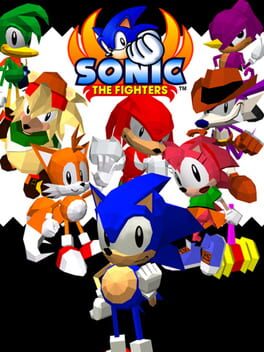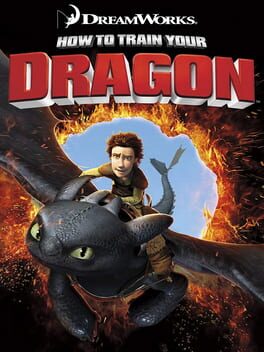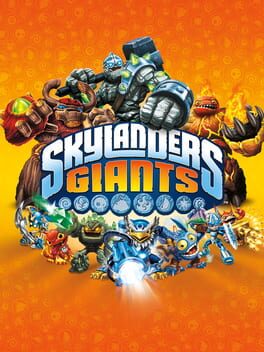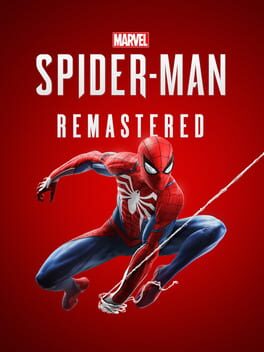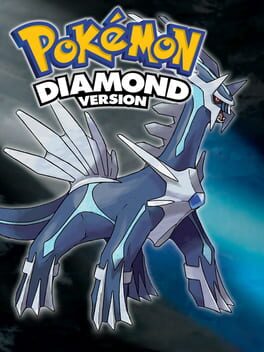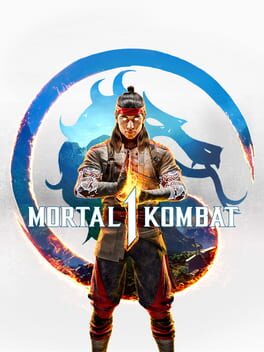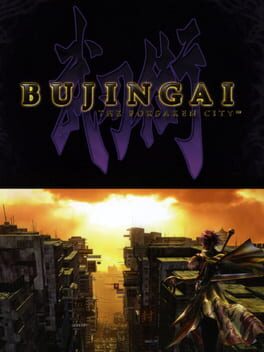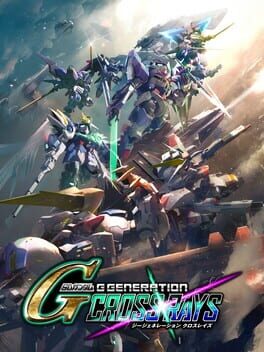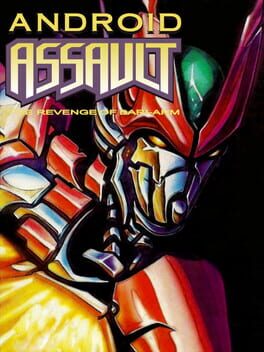TheCODFather
742 reviews liked by TheCODFather
Black Mesa
2015
Half-Life has been on my agenda to beat for quite a while now, and I'm happy that I finally got around to beating Black Mesa. I could never beat the original but this is the definitive way to play the game. Really enjoyable experience throughout, but Xen is pretty crap once you hit the conveyer belts and the final boss was just okay. Loved the atmosphere though and now I can get around to Half-Life Alyx.
Resident Evil 4
2023
Sonic the Fighters
1996
Lies of P
2023
A Dragon Adventure for Fans
"How to Train Your Dragon" on the Nintendo DS offers an enjoyable experience for fans of the film series who are looking to immerse themselves in the world of dragons. While it may not reach the heights of some other movie tie-in games, it still has its charms.
Pros:
Dragon Interaction: The game excels in allowing players to interact with and train dragons. This is where it truly shines, as you can bond with these fantastic creatures and watch them grow and evolve.
Mini-Games: There are various mini-games and challenges that keep the gameplay diverse and engaging. These tasks add variety to the experience.
Exploration: Exploring the world of Berk is a highlight. The game captures the essence of the movie's setting, making it a treat for fans.
Cons:
Repetitiveness: Some elements of the game can become repetitive over time, especially if you're not deeply invested in the franchise.
Graphics: The Nintendo DS's hardware limitations mean that the graphics aren't as impressive as on other platforms, which may disappoint some players.
Limited Depth: While enjoyable, the game lacks the depth and complexity of more dedicated RPGs or adventure games.
In summary, "How to Train Your Dragon" on Nintendo DS is a decent game for fans who want to explore the dragon-filled world of Berk. It provides an engaging experience but falls short of becoming a must-play title due to some repetition and limited depth. If you're a fan of the franchise, it's worth giving a try to live out your dragon-training fantasies on the go.
"How to Train Your Dragon" on the Nintendo DS offers an enjoyable experience for fans of the film series who are looking to immerse themselves in the world of dragons. While it may not reach the heights of some other movie tie-in games, it still has its charms.
Pros:
Dragon Interaction: The game excels in allowing players to interact with and train dragons. This is where it truly shines, as you can bond with these fantastic creatures and watch them grow and evolve.
Mini-Games: There are various mini-games and challenges that keep the gameplay diverse and engaging. These tasks add variety to the experience.
Exploration: Exploring the world of Berk is a highlight. The game captures the essence of the movie's setting, making it a treat for fans.
Cons:
Repetitiveness: Some elements of the game can become repetitive over time, especially if you're not deeply invested in the franchise.
Graphics: The Nintendo DS's hardware limitations mean that the graphics aren't as impressive as on other platforms, which may disappoint some players.
Limited Depth: While enjoyable, the game lacks the depth and complexity of more dedicated RPGs or adventure games.
In summary, "How to Train Your Dragon" on Nintendo DS is a decent game for fans who want to explore the dragon-filled world of Berk. It provides an engaging experience but falls short of becoming a must-play title due to some repetition and limited depth. If you're a fan of the franchise, it's worth giving a try to live out your dragon-training fantasies on the go.
Skylanders: Giants
2012
"Skylanders Giants" falls short of expectations, earning a mere two out of five stars in this review. The game, while building on the innovative concept of physical toy-to-life interaction, lacks the depth and engaging gameplay needed to captivate its audience. The storyline, though suitable for a younger demographic, lacks the complexity and intrigue that could have made it more universally appealing. Additionally, the graphics, while vibrant, feel dated compared to contemporary gaming standards, diminishing the overall immersive experience.
One of the major drawbacks is the repetitiveness of gameplay mechanics. The level design lacks creativity, and the objectives become monotonous quickly, leaving players with a sense of tediousness rather than excitement. Furthermore, the character selection, a key element in a game centered around collectible figures, fails to bring substantial diversity or strategic depth to the gameplay. This limitation hampers the game's ability to maintain long-term engagement.
While the game's emphasis on physical toys as interactive game pieces is commendable, it doesn't make up for the lackluster overall experience. The two-star rating reflects the missed opportunities and underwhelming execution in key aspects of "Skylanders Giants." Gamers seeking a more fulfilling and dynamic gaming experience may find themselves disappointed by this installment in the Skylanders series
One of the major drawbacks is the repetitiveness of gameplay mechanics. The level design lacks creativity, and the objectives become monotonous quickly, leaving players with a sense of tediousness rather than excitement. Furthermore, the character selection, a key element in a game centered around collectible figures, fails to bring substantial diversity or strategic depth to the gameplay. This limitation hampers the game's ability to maintain long-term engagement.
While the game's emphasis on physical toys as interactive game pieces is commendable, it doesn't make up for the lackluster overall experience. The two-star rating reflects the missed opportunities and underwhelming execution in key aspects of "Skylanders Giants." Gamers seeking a more fulfilling and dynamic gaming experience may find themselves disappointed by this installment in the Skylanders series
A Gem Revisited:
Pokemon Diamond, originally released in 2006 for the Nintendo DS, marked the beginning of the fourth generation of the beloved Pokemon series. As a nostalgic classic, it continues to hold a special place in the hearts of Pokemon fans worldwide. In this in-depth review, we will explore the various aspects of Pokemon Diamond, from its gameplay mechanics to its story and overall impact on the franchise.
Gameplay (9/10):
Pokemon Diamond maintains the core gameplay mechanics that have made the series a hit for over two decades. Players embark on a journey to become a Pokemon Champion, capturing, training, and battling with a wide variety of Pokemon. The fourth generation introduced several noteworthy improvements, such as the Physical/Special split, which added depth to battles by categorizing moves based on their damage type rather than their elemental type.
The addition of the Global Trade System (GTS) allowed players to trade Pokemon with others worldwide, enhancing the sense of community within the game. The Underground feature, which enabled players to mine for items and set up secret bases, was another welcome addition, offering hours of enjoyable distractions.
Graphics and Art Style (7/10):
While Pokemon Diamond was a significant graphical improvement compared to its predecessors, it falls short of the visual standards set by more recent entries in the series. The sprite-based graphics do not showcase the full potential of the Nintendo DS hardware, and character animations are somewhat limited.
However, the Sinnoh region's diverse landscapes and the design of new Pokemon species were a highlight. The art style captures the essence of the Pokemon world, with unique and imaginative creature designs that continue to charm players.
Story and Narrative (8/10):
Pokemon Diamond's narrative follows the standard formula of a young trainer embarking on a journey to collect Gym Badges and thwart the plans of a nefarious organization, Team Galactic. While the story may not be groundbreaking, it does introduce some intriguing concepts related to the creation of the Pokemon universe.
The inclusion of the Legendary Pokemon Dialga, Palkia, and Giratina adds depth to the lore and makes the player feel like a true hero in the Pokemon world. The game's pacing is generally well-executed, although some may find the story a bit predictable due to the franchise's formulaic nature.
Sound and Music (9/10):
Pokemon Diamond boasts an exceptional soundtrack that enhances the overall gaming experience. The memorable tunes, from the catchy battle themes to the calming melodies of towns and routes, contribute to the game's immersive atmosphere. The use of different musical themes for day and night cycles also adds a layer of realism to the game world.
The nostalgic factor of hearing these tunes can't be overstated, and many fans continue to hold a special place in their hearts for tracks like the iconic Route 209 theme.
Replayability (10/10):
One of Pokemon Diamond's strongest aspects is its replayability. With a vast world to explore, numerous Pokemon to catch, and various post-game activities, players can easily sink hundreds of hours into the game. The Battle Tower, competitive battling, and hunting for Legendary Pokemon provide plenty of endgame content.
Additionally, the availability of multiple starter Pokemon and the choice of different team compositions make it tempting to replay the game to experience a fresh adventure.
Conclusion:
Pokemon Diamond may show its age in terms of graphics and animation, but it remains a classic in the Pokemon franchise. Its engaging gameplay, memorable soundtrack, and vast post-game content make it a title that fans continue to revisit. While newer entries have raised the bar in terms of visuals and storytelling, Pokemon Diamond's enduring charm cements its place as a gem in the series that fans old and new can still enjoy.
Pokemon Diamond, originally released in 2006 for the Nintendo DS, marked the beginning of the fourth generation of the beloved Pokemon series. As a nostalgic classic, it continues to hold a special place in the hearts of Pokemon fans worldwide. In this in-depth review, we will explore the various aspects of Pokemon Diamond, from its gameplay mechanics to its story and overall impact on the franchise.
Gameplay (9/10):
Pokemon Diamond maintains the core gameplay mechanics that have made the series a hit for over two decades. Players embark on a journey to become a Pokemon Champion, capturing, training, and battling with a wide variety of Pokemon. The fourth generation introduced several noteworthy improvements, such as the Physical/Special split, which added depth to battles by categorizing moves based on their damage type rather than their elemental type.
The addition of the Global Trade System (GTS) allowed players to trade Pokemon with others worldwide, enhancing the sense of community within the game. The Underground feature, which enabled players to mine for items and set up secret bases, was another welcome addition, offering hours of enjoyable distractions.
Graphics and Art Style (7/10):
While Pokemon Diamond was a significant graphical improvement compared to its predecessors, it falls short of the visual standards set by more recent entries in the series. The sprite-based graphics do not showcase the full potential of the Nintendo DS hardware, and character animations are somewhat limited.
However, the Sinnoh region's diverse landscapes and the design of new Pokemon species were a highlight. The art style captures the essence of the Pokemon world, with unique and imaginative creature designs that continue to charm players.
Story and Narrative (8/10):
Pokemon Diamond's narrative follows the standard formula of a young trainer embarking on a journey to collect Gym Badges and thwart the plans of a nefarious organization, Team Galactic. While the story may not be groundbreaking, it does introduce some intriguing concepts related to the creation of the Pokemon universe.
The inclusion of the Legendary Pokemon Dialga, Palkia, and Giratina adds depth to the lore and makes the player feel like a true hero in the Pokemon world. The game's pacing is generally well-executed, although some may find the story a bit predictable due to the franchise's formulaic nature.
Sound and Music (9/10):
Pokemon Diamond boasts an exceptional soundtrack that enhances the overall gaming experience. The memorable tunes, from the catchy battle themes to the calming melodies of towns and routes, contribute to the game's immersive atmosphere. The use of different musical themes for day and night cycles also adds a layer of realism to the game world.
The nostalgic factor of hearing these tunes can't be overstated, and many fans continue to hold a special place in their hearts for tracks like the iconic Route 209 theme.
Replayability (10/10):
One of Pokemon Diamond's strongest aspects is its replayability. With a vast world to explore, numerous Pokemon to catch, and various post-game activities, players can easily sink hundreds of hours into the game. The Battle Tower, competitive battling, and hunting for Legendary Pokemon provide plenty of endgame content.
Additionally, the availability of multiple starter Pokemon and the choice of different team compositions make it tempting to replay the game to experience a fresh adventure.
Conclusion:
Pokemon Diamond may show its age in terms of graphics and animation, but it remains a classic in the Pokemon franchise. Its engaging gameplay, memorable soundtrack, and vast post-game content make it a title that fans continue to revisit. While newer entries have raised the bar in terms of visuals and storytelling, Pokemon Diamond's enduring charm cements its place as a gem in the series that fans old and new can still enjoy.
Mortal Kombat 1
2023
I hope the eventual expansion is called Mortal Kombat 1 2.
I feel the narrative story mode is roughly as strong as that in Mortal Kombat 11, although I prefer MK1’s martial arts focus to the past two games’ obsessions with the boring special forces characters. In fact, the re-contextualization of the characters and backstories is one of the more interesting aspects of the story; nobody wanted to see Raiden fumble the realms a fourth time. The dialogue can be grating and Marvelesque, especially with Johnny Cage, and unfortunately the last two chapters dissolve into a predictable mash of multiverse shenanigans and in-jokes.
I’d be lying if I didn’t admit that the references were pointed at me, basically saying “Conman, this one’s for you.” I mean, Havik’s presence in this game alone feels like a direct Conman appeal. Not to get ahead of myself, but SHUJINKO is a Kameo fighter in this game and his fatality is the five point palm exploding heart technique from Kill Bill. Anyway, the majority of the campaign was quite enjoyable and the new spin on things felt refreshing. Playing the Earthrealm characters without their powers for the opening portion of the game was particularly cool to me. The end is a mess, but there was a novelty to it which I didn’t mind. Also a fun tip, I didn’t turn it off but the Test Your Might stuff can be disabled in the options menu.
While I’m happy NRS decided to pander specifically to my nostalgia for the 3D era MK games, I wish they’d actually just bring back Konquest mode. The new Invasions mode is basically Super Smash Bros. Ultimate’s World of Light, which is better the last game’s multiverse gear-grinding towers, but I would've hoped to see them expand on MK11’s Krypt mode instead.
Where this game shines above Mortal Kombat 11 most is in its gameplay. The Kameo assist system/gimmick is the shot in the arm this needed to become more dynamic and interesting than its predecessor, combining different characters with different Kameos leads to different match-ups and unique matches in a way 11 simply never achieved.
I think Street Fighter 6 being so incredible takes the wind out of MK1’s sails a bit (it even basically has Konquest mode), but just because another game is better doesn’t mean this game isn’t good. I like it. I’m gonna stop rambling and go back to playing it.
I feel the narrative story mode is roughly as strong as that in Mortal Kombat 11, although I prefer MK1’s martial arts focus to the past two games’ obsessions with the boring special forces characters. In fact, the re-contextualization of the characters and backstories is one of the more interesting aspects of the story; nobody wanted to see Raiden fumble the realms a fourth time. The dialogue can be grating and Marvelesque, especially with Johnny Cage, and unfortunately the last two chapters dissolve into a predictable mash of multiverse shenanigans and in-jokes.
I’d be lying if I didn’t admit that the references were pointed at me, basically saying “Conman, this one’s for you.” I mean, Havik’s presence in this game alone feels like a direct Conman appeal. Not to get ahead of myself, but SHUJINKO is a Kameo fighter in this game and his fatality is the five point palm exploding heart technique from Kill Bill. Anyway, the majority of the campaign was quite enjoyable and the new spin on things felt refreshing. Playing the Earthrealm characters without their powers for the opening portion of the game was particularly cool to me. The end is a mess, but there was a novelty to it which I didn’t mind. Also a fun tip, I didn’t turn it off but the Test Your Might stuff can be disabled in the options menu.
While I’m happy NRS decided to pander specifically to my nostalgia for the 3D era MK games, I wish they’d actually just bring back Konquest mode. The new Invasions mode is basically Super Smash Bros. Ultimate’s World of Light, which is better the last game’s multiverse gear-grinding towers, but I would've hoped to see them expand on MK11’s Krypt mode instead.
Where this game shines above Mortal Kombat 11 most is in its gameplay. The Kameo assist system/gimmick is the shot in the arm this needed to become more dynamic and interesting than its predecessor, combining different characters with different Kameos leads to different match-ups and unique matches in a way 11 simply never achieved.
I think Street Fighter 6 being so incredible takes the wind out of MK1’s sails a bit (it even basically has Konquest mode), but just because another game is better doesn’t mean this game isn’t good. I like it. I’m gonna stop rambling and go back to playing it.


